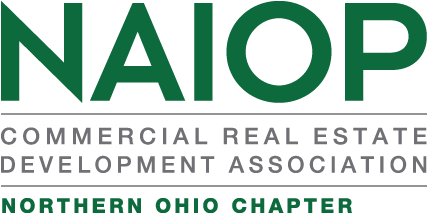Revised Ordinance Demonstrates Successful Cooperation Between Private and Public Sectors
By R. Todd Hunt
Last month an article appeared in this publication from my law partner, Jack Waldeck, regarding the City of Cleveland’s proposed ordinance mandating building façade inspections of older buildings that meet specific requirements. Since that time, the ordinance was passed on April 4, 2016 and will become effective June 6, 2016. However, it was passed with substantial revisions from what was originally proposed. Thanks to the lobbying efforts of several organizations including, but not limited to, the Downtown Cleveland Alliance, the Building Owners and Managers Association, and NAIOP, as well as the cooperation and attention given to the issues by several Cleveland councilpersons including, but not limited to, Council President Kevin Kelley, Matt Zone and former Councilperson Joe Cimperman, the final ordinance passed by the Council is a reasoned effort to address a substantial problem with older buildings. The ordinance was precipitated by recent incidents of building facades deteriorating and falling onto public ways around Greater Cleveland resulting in damage to property but, thankfully, not injury to persons, as yet. The ordinance was proposed by former Councilperson Cimperman as new sections to the City’s Building Code that would require inspections of the facades of buildings that are five stories high or 75 feet above grade (whichever is shorter), and more than 30 years old. Generally, buildings that are 50+ years old must be inspected within the first year of the effective date of the ordinance and every five years thereafter, while buildings that are 30+ years old must be inspected within the first two years of the effective date of the ordinance and every five years thereafter. Buildings will be subject to the new ordinance if they are within a protected distance /setback (defined as the space between the building and the public way, other structures or adjoining property) that is equal to or less than the height of the tallest portion of the structure above grade. One-, two- and three-family residential buildings are exempt from the ordinance. The ordinance applies city-wide and not just to the Downtown area. The ordinance places the burden of producing an inspection report upon the building owner. The report is required to document all significant deterioration, unsafe conditions and movement. Building owners would then be required to begin repairs or implement reinforcement and precautionary measures immediately. When a building passes inspection, a certificate will be issued by the City and must be available upon request by anyone requesting the same. If the building inspection does not result in the reporting of a safe condition and a certificate issued to the building, the building cannot be occupied. Revisions made to the proposed ordinance prior to final passage include:
- Clarifying the definition of a qualified inspector as either of the following:
- Clarifying that the initial required inspection is a general inspection that meets or exceeds the ASTM Standards for Periodic Inspection of Building Facades for Unsafe Conditions contained in Designation E2270-14. Any areas found to be deficient in the general inspection then require a detailed inspection.
- Revising the requirement that all inspections and reports be completed within one year of the effective date of the new ordinance.
- Removing the requirement that the building post the Certificate of Exterior Walls and Appurtenances at the main entrance of the building. This was replaced with the requirement the owner keep the complete inspection documentation and Certificate on site or produce that documentation within 48 hours of any request by the City’s Director of Building and Housing, the Chief of Fire, or their designees.
- One year after the effective date of the ordinance, the Director of Building and Housing must provide Council members with a review of the legislation.
- Most significantly, the ordinance expires and will be of no force and effect two years after the effective date of the ordinance. This is meant to give the Council the opportunity to again review its effectiveness and determine whether to extend or re-enact the ordinance with any amendments deemed necessary.
1) A design professional (engineer or architect) certified in inspection of the specific elements that make up the façade of the structure, and licensed by the State of Ohio, or 2) A special inspector or inspection agency accredited and experienced in the specific type of structure being inspected, and qualified under the Ohio Building Code for Special Inspectors. As part of the Building Code, the ordinance carries with it misdemeanor penalties for failure to comply. Building owners who do not comply with the ordinance may be found guilty of a first degree misdemeanor and each day of non-compliance may constitute a separate offense of the ordinance. Affected building owners should obtain a copy of the final ordinance from the City Record or from the City of Cleveland’s website to review the details of the ordinance which will be Sections 3143.01 through .05, and .99 of the Building Code. City Council’s willingness to listen to the building owner community was extremely important given the unintended consequences that may result from any legislation that imposes new regulations, particularly upon older structures in the community. Such unintended consequences may be: the ability to finance or refinance the re-development of older properties or transfers of those properties; the availability of qualified inspectors to perform the detailed inspections required by the ordinance within the first year of its effectiveness; the staffing within the City’s Department of Building and Housing needed to timely review inspection reports, perform follow-up inspections, issue certificates, and pursue enforcement; owners having adequate financial resources for inspections and repairs; negative effects on rents; and potential involvement of the City’s historic review process when historic buildings are involved. All in all, the final ordinance passed by City Council is an example of public/private cooperation to solve a significant problem in a thoughtful and measured manner. ——————

Todd Hunt is a partner, chair of the Economic Development Practice Group, and member of the firm’s Real Estate, Public Law and Litigation Practice Groups of Cleveland-based Walter|Haverfield LLP.


